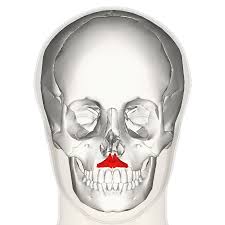The plunging nasal tip deformity is a dynamic aesthetic issue that occurs when smiling. The tip actively moves down when smiling due to the combined actions of the muscles around the nasal base. As a result transection of the septi nasi muscle is commonly recommended done its treatment.
In the April 2018 issue of the Aesthetic Surgery Journal an article was published entitled ‘Transection of the Nasal Base Muscles for the Correction of Plunging Tip: An Outcome Analysis’. In this paper the authors studied the actions of the nasal tip, nasal base and the upper lip in the treatment of the plunging nasal tip after multiple myotomes of the septi nasalis, levator labii superioris and alaeque nas muscles. Photographic measurements of side profile rest and smile images was done before and one year after the procedure in twenty-seven (27) patients.
Their findings showed that the movements of the nasal tip and nasal base were significantly reduced after the procedure. The change in the nasolabial angle when smiling significantly decreased as well. Interestingly the upper lip shortened a measurable amount when smiling as an unexpected sequelae of the procedure.

The levator labii superiors alaeque nasi muscle lifts the upper and side of the nose. It originates from the frontal process of the maxilla and descends to insert into the skin at the base of the nose and the upper lip. When contracted it dilates the nostril as well as elevates the upper lip. When only one side is contracted it creates a snarl look. While not commonly used to treat the plunging tip it is easy to see based on the muscle action why its release would cause less nasal base elevation which would accentuate a plunging nasal tip.
The traditional aesthetic tradeoff for treating the plunging nasal tip with muscle resection is that the upper lip can lengthen. Conversely this clinical study shows the opposite with an upper lip shortening. This may be the result of scarring from all muscle resections that were done. Patient’s should be aware that the upper lip length may change with nasal base muscle resections are done.
Dr. Barry Eppley
Indianapolis Indiana


